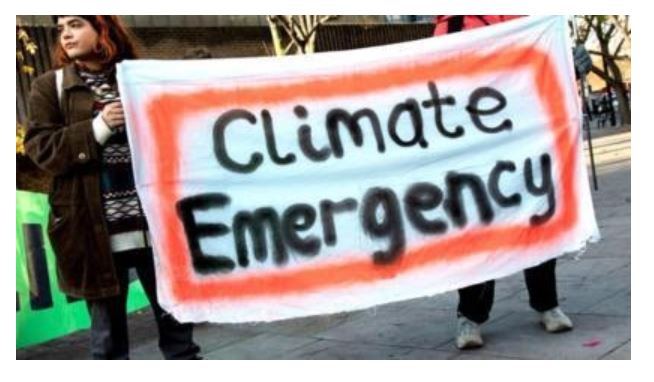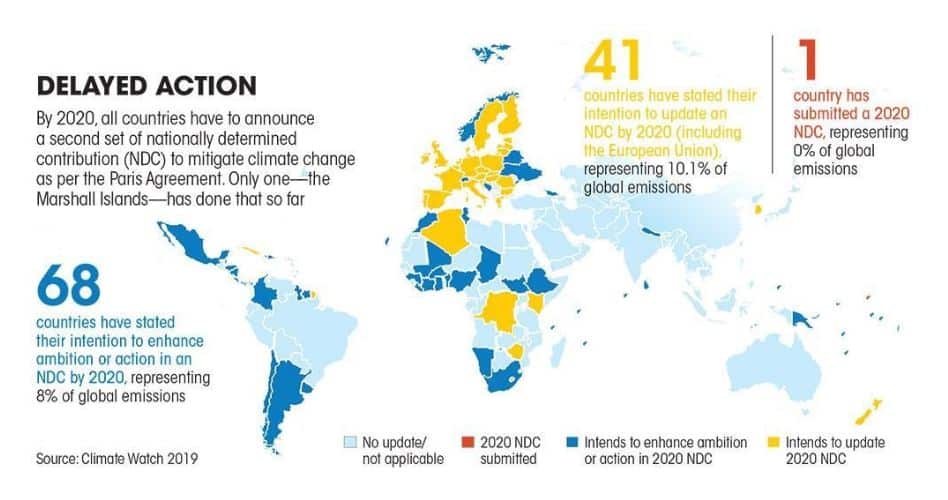UPSC Articles
ENVIRONMENT
TOPIC: General Studies 2:
- Conservation, environmental pollution and degradation, environmental impact assessment
CoP 25: Climate Emergency

Daily Current Affairs IAS | UPSC Prelims and Mains Exam – 21st December 2019
Context:
- The 25th annual talks under the United Nations Framework Convention on Climate Change (UNFCCC), referred to as the Conference of Parties (COP), was recently held in Madrid.
- It ended without any outcome.
- It was the 15th meeting of the parties for the Kyoto Protocol (CMP15), and also, it was the second meeting of the parties for the Paris Agreement.
- The prime objective of the conference is to complete the rule-book to the 2015 Paris Agreement that will become effective in 2020 to replace the 1997 Kyoto Protocol (comes to an end in 2020).
The Paris Agreement:
- The Paris Agreement was the first legal instrument to set an explicit temperature target. It pushes countries to keep the average global temperature rise to below 2°C over pre-industrial levels and encourages them to limit it to 1.5°C. It does this largely through voluntarily agreed Nationally Determined Contributions, or NDCs.
- Even if all NDC commitments are met, the global mean temperatures would still rise by 3.2°C by 2100, estimates the United Nations Environment Programme’s Emissions Gap Report To limit warming to 1.5°C, annual global emissions in 2030 need to be under 25 GtCO2 e while the less ambitious 2°C target requires limiting emissions to 41 GtCO2e.even if all NDCs are met, the annual emissions in 2030 will be 54 GtCO2e.

Daily Current Affairs IAS | UPSC Prelims and Mains Exam – 21st December 2019
- The question of meeting the Paris Agreement is usually reduced to whether countries are on track to meet the first round of NDCs, which were announced in 2015.
- The Agreement requires countries to declare new, progressively ambitious targets every five years and the second round of NDCs are due in 2020.
Under the Article 4 of the Paris Agreement — the requirement that each party shall communicate a NDC every five years, and that each successive NDC must be a “progression” beyond the party’s current NDC.

Daily Current Affairs IAS | UPSC Prelims and Mains Exam – 21st December 2019
- Mexico (1.49 per cent of annual global emissions) currently aims for its 2030 emissions to be 22-36 per cent below levels seen in 2000, and a 50 per cent reduction in 2000 levels by 2050.
- These targets were submitted as part of a mid-century strategy published in 2016, and Mexico contends they are consistent with the 2°C threshold.
- South Korea (1.29 per cent of global annual emissions), which published its 2050 strategy in 2009, much before the Paris Agreement legally established the 1.5°C and 2°C thresholds to assess NDCs.
- Other significant emitters with a declared intent to update targets in 2020 include South Africa (1.08 per cent of global annual emissions), Nigeria (1.01 per cent), Argentina (0.91 per cent) and Ukraine (0.70 per cent).
Conclusion:
- Do you think India must follow NDCs?
- Do you think Paris agreement is a failure?











